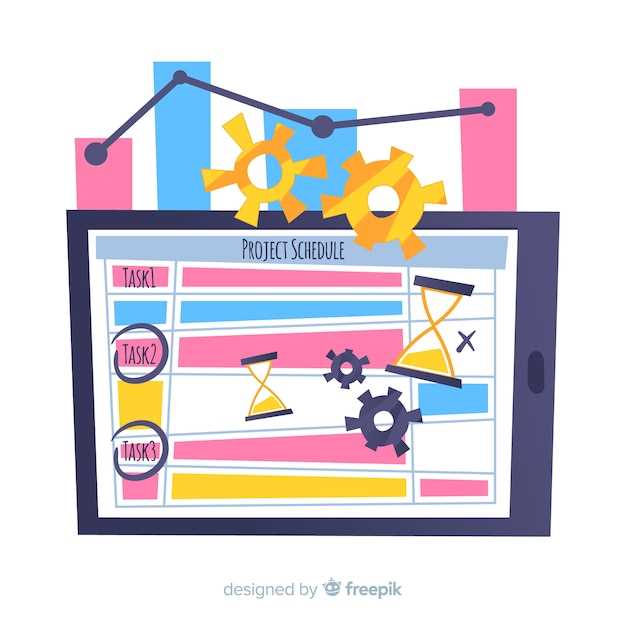
In the fast-paced world of service and repair businesses, having an efficient system for managing repair orders is crucial. The right repair order management software not only streamlines workflows but also enhances customer satisfaction by providing a seamless experience from service initiation to final invoicing. As companies seek to maximize productivity and minimize errors, investing in dedicated software solutions is more important than ever.
With numerous options available, choosing the best repair order management software can be overwhelming. Key features such as real-time tracking, automated invoicing, and comprehensive reporting capabilities are critical for maintaining operational excellence. The integration of these functionalities helps service centers manage their workflow more effectively, reducing turnaround times and ensuring that clients receive timely updates on their repair status.
This article will explore some of the top repair order management software solutions available in the market today. We’ll analyze their unique features, benefits, and how they can empower your business to achieve greater efficiency while simplifying the invoicing process. Let’s dive into the world of repair order management software and discover the tools that can transform your operations.
Choosing the Right Repair Order Software for Your Business Size

When selecting repair order management software, it’s essential to consider the unique needs of your business size. A small garage may require different features compared to a large automotive repair chain. For small businesses, simplicity and cost-effectiveness are key; look for software that offers straightforward invoicing processes and easy setup. Features like basic reporting and customer management should suffice without overwhelming users.
Medium-sized operations might benefit from software that includes additional functionalities, such as inventory management and integrated invoicing options. This allows for more efficient tracking of repair orders and financials, providing insights that can aid in decision-making. It’s crucial that the software can scale to accommodate increasing customer demands without requiring a complete overhaul.
For larger businesses, advanced features become vital. Comprehensive repair order software should automate complex invoicing, support multiple locations, and offer customizable reporting tools. Integration with other systems, like accounting or customer relationship management, can streamline operations and enhance productivity. Opt for a solution that can handle a high volume of transactions while providing robust support for managing large teams.
In conclusion, the right repair order management software is one that aligns with your business size and operations. Evaluate features based on your scalability needs and ensure the software improves efficiency and enhances customer satisfaction across your specific industry.
Integrating Invoicing Tools for Streamlined Financial Processes

In today’s competitive market, efficient financial processes are crucial for business success. Integrating invoicing tools into your repair order management software enhances operational efficiency, ensuring timely payments and reducing administrative burdens.
By implementing invoicing features directly within your software, you can automate billing procedures. This integration allows for seamless data transfer between repair orders and invoices, minimizing manual entry errors and ensuring that all financial transactions are accurately recorded.
Moreover, integrated invoicing tools provide real-time financial insights. Businesses can monitor outstanding invoices, track payment statuses, and analyze cash flow more effectively. With invaluable analytics at your fingertips, decision-making becomes more informed and strategic.
Another significant advantage is customization. Many invoicing tools offer customizable templates, enabling businesses to personalize invoices according to their branding. This enhances professionalism and can lead to improved customer satisfaction.
Security is also a key consideration. Integrated invoicing tools often come with built-in security features such as encryption and data protection, safeguarding sensitive financial information against potential breaches.
In conclusion, the integration of invoicing tools within repair order management software not only streamlines financial processes but also boosts accuracy, enhances customer relations, and provides valuable insights. Investing in this software integration is a step toward sustainable business growth and operational success.
Must-Have Features in Repair Order Management Software
Repair order management software is essential for streamlining processes in repair shops. Incorporating the right features can significantly enhance productivity and customer satisfaction. Here are the must-have features to look for in such software:
Firstly, an intuitive user interface is crucial. A straightforward design allows staff to navigate the system effortlessly, reducing training time and minimizing errors. Efficient software should be user-friendly, enabling quick access to information.
Secondly, comprehensive invoicing capabilities are vital. The software should support automated billing processes, including customizable invoice templates. The ability to generate invoices quickly based on repair orders enhances cash flow management and improves accuracy in billing clients.
Another important feature is real-time tracking of repair orders. This functionality allows both staff and customers to monitor the progress of repairs, leading to greater transparency and enhanced customer trust. Notifications about order status updates can also increase customer engagement.
Integration with inventory management is another critical aspect. The software should enable seamless tracking of parts and materials, helping to avoid delays caused by inventory shortages. Real-time inventory updates promote efficient ordering and restocking processes.
Additionally, robust reporting and analytics tools are essential for understanding business performance. By providing insights into metrics such as repair times, costs, and customer preferences, these tools help businesses make informed decisions to drive growth and efficiency.
Lastly, ensure that the software includes customer management features. Keeping detailed records of customer interactions and history aids in providing personalized service. This can lead to higher customer satisfaction and a better overall experience.




